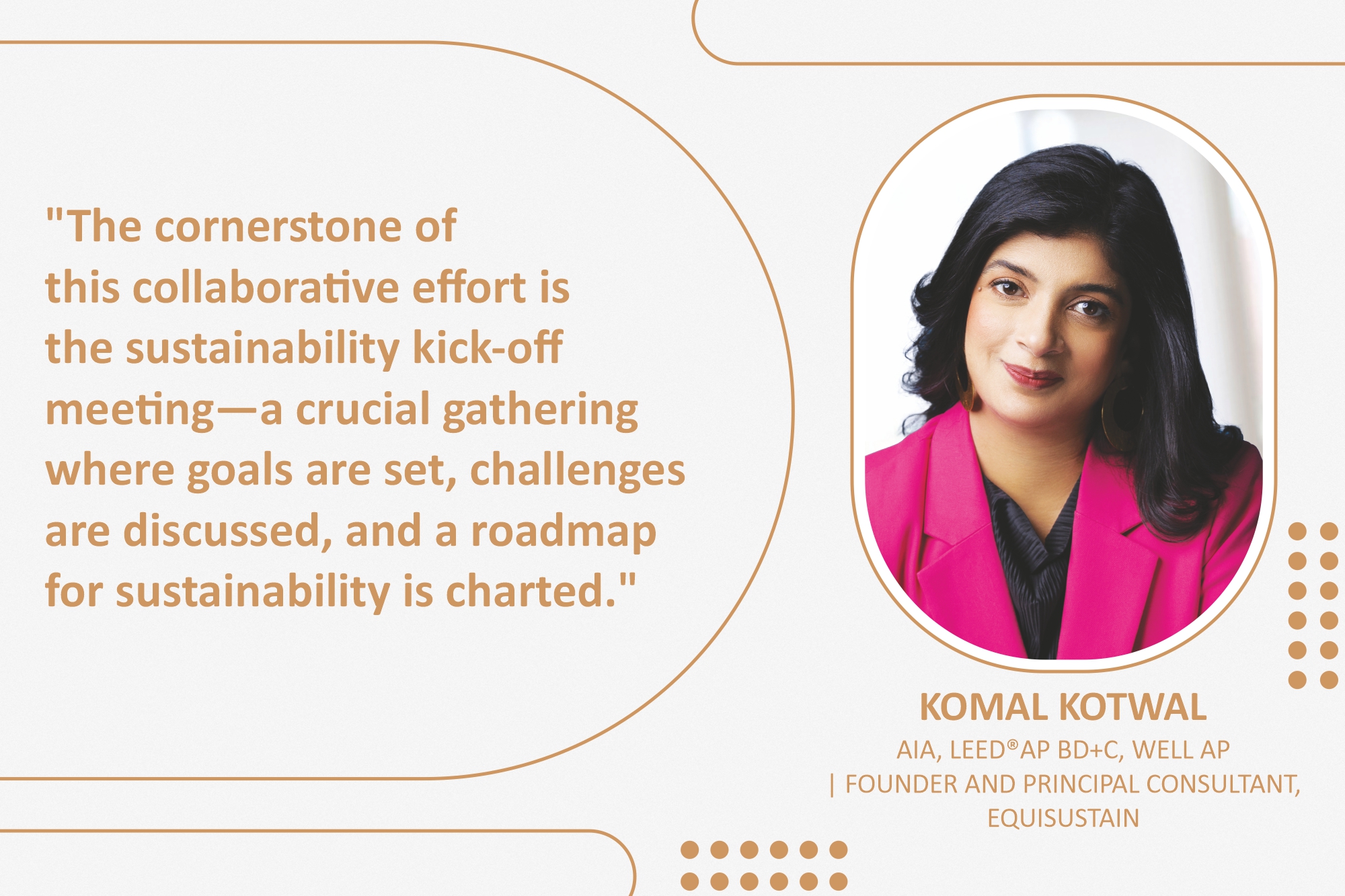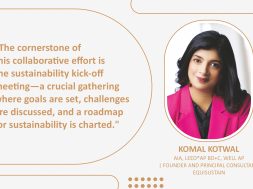The collaborative path to energy-efficient building design

Sustainability must be a core guiding principle that demands integration from inception to completion. Built environments that stand as beacons of environmental responsibility require a holistic approach from their conception —one that engages all stakeholders from the beginning. The journey towards energy-efficient building design begins with collaboration.
Architects, engineers, sustainability consultants, and various other stakeholders must come together, recognising the vital role each plays in achieving sustainable outcomes. It’s not enough for sustainability to be championed by a lone figure; it must be a collective effort woven into every decision and design choice. The cornerstone of this collaborative effort is the sustainability kick-off meeting—a crucial gathering where goals are set, challenges are discussed, and a roadmap for sustainability is charted.
Here, stakeholders define what success looks like for the project, identifying key targets for energy, water, materials, health, and site strategies. The meeting sets the tone for the entire project, ensuring sustainability remains a central focus. As the design process unfolds, sustainability evolves alongside it. In the conceptual phase, preliminary analyses and energy use intensity targets are established, setting the stage for further exploration. Designers must delve into massing, orientation, and window-to-wall ratios, seeking energy efficiency and carbon reduction opportunities.

Collaboration continues into schematic design and design development, where detailed energy models and life cycle analyses inform decision-making. Material selection needs to become a critical consideration, emphasising mindful choices that align with sustainability goals.
Manufacturers are engaged in Environmental Product Declarations (EPDs), ensuring transparency in the supply chain. Sustainability requirements are integrated into specifications throughout each phase, guiding the construction process from conception to completion. Even during construction, sustainability should remain paramount.
Regular meetings with the construction team should ensure sustainable design strategies are implemented effectively. Payment schedules may be tied to sustainability reports, incentivising adherence to green building practices. Submittals should be reviewed for compliance, with a keen eye on environmental attributes such as recycled content and embodied carbon. For projects pursuing certification, the construction phase is particularly pivotal.
Certification hinges on the expertise and commitment of the construction team, making ongoing collaboration and communication indispensable. In conclusion, energy-efficient building design is not achieved in isolation; it is the product of collective vision and collaboration.
By involving all stakeholders from the outset and maintaining a steadfast commitment to sustainability throughout every phase, architects can create structures that minimise environmental impact and inspire a greener, more sustainable future. As we pursue sustainable architecture, collaboration will remain our greatest ally.
For more info visit: https://equisustainglobal.com/
21
Cookie Consent
We use cookies to personalize your experience. By continuing to visit this website you agree to our Terms & Conditions, Privacy Policy and Cookie Policy.







